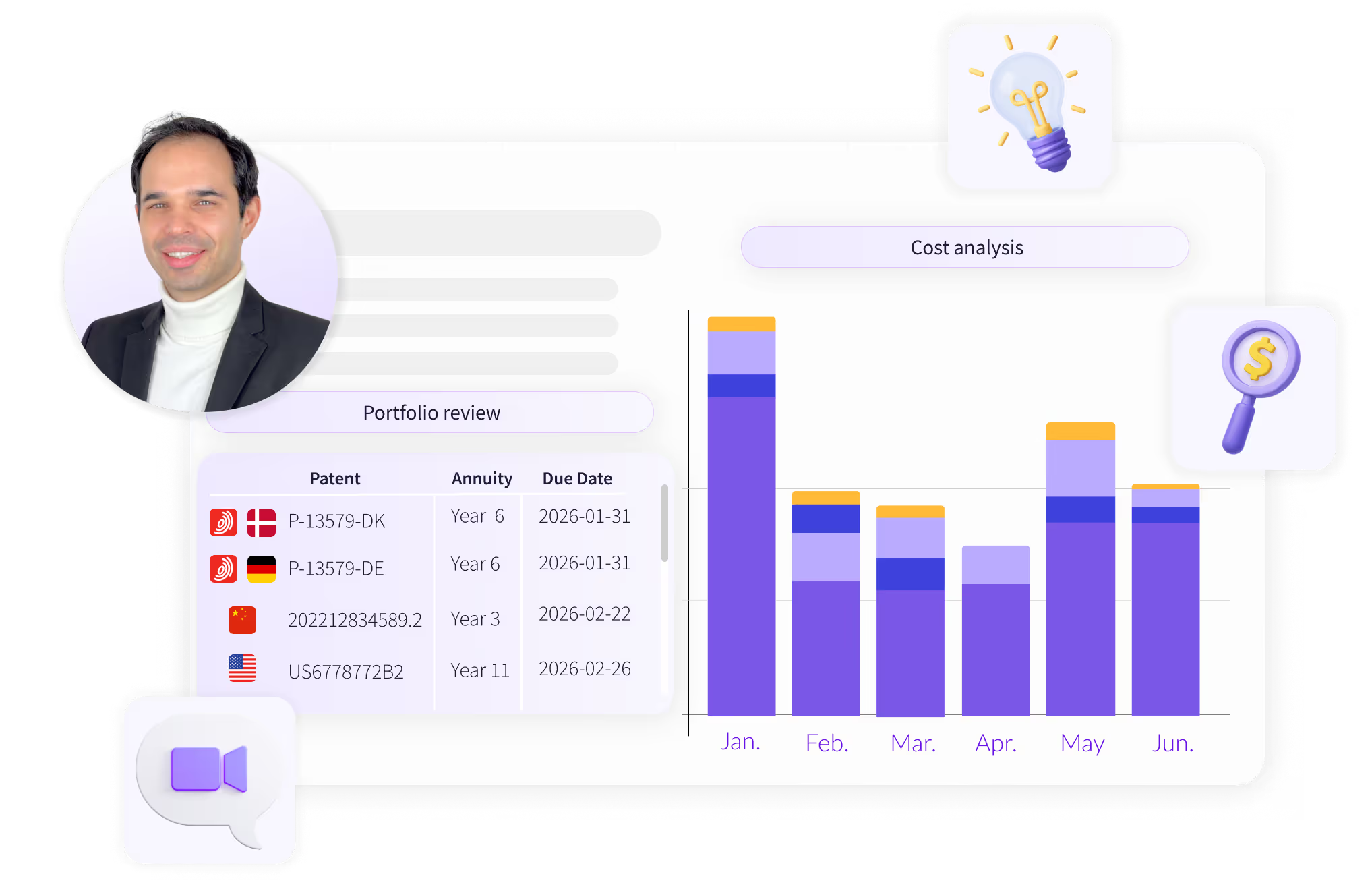TRY OUR NEW (FREE) IP RENEWAL COST CALCULATOR
Calculate

Navigating IP management on a global scale requires an understanding of how patent renewal laws vary across jurisdictions. While global treaties offer frameworks for initial filings, countries retain unique laws, impacting patent renewal schedules, documentation requirements, and penalties.
This article explores some major differences in patent renewal laws around the world, based on our most up-to-date knowledge as of November 2024, reflecting current insights. Our blog post highlights a few key regions, challenges faced by IP holders, and expert insights to help patentees make informed IP renewal decisions.
Patent renewal timelines and requirements differ widely by country, impacting how IP holders manage their assets. For instance, in the European Union, the United States, Japan, and China each enforce distinct renewal timelines, grace periods, and fees, impacting how patentees approach long-term patent maintenance:
Each of these systems emphasizes the importance of strategic patent maintenance, especially for patentees holding portfolios across different jurisdictions. For more information about renewal fees in specific jurisdictions, visit our renewal fees pages, which provide details of the specific requirements in more than 90 countries.
Grace periods and penalties affect where and how companies choose to maintain patents. Jurisdictions with steep penalties for late patent maintenance may influence a company’s decision to renew strategically valuable patents only.
“In countries with severe penalties for missed renewals, firms need to allocate resources to ensure timely compliance, which might involve hiring legal experts familiar with international patent laws. These differences can also impact decisions on where to file new patents, whether to maintain current patents, and how to prioritize IP portfolios.
Companies may choose to maintain patents longer in jurisdictions with lenient policies, whereas in strict countries, they might opt to let certain patents lapse if they’re not strategically vital. This strategic planning is integral to safeguarding a company’s inventions and innovations globally.” - Rick Chahal ( Licensed Paralegal & Legal Assistant, Marketing expert, Kahlon Law)
In some countries, short or nonexistent grace periods require strict attention to deadlines, while others with extended grace periods provide flexibility, allowing companies more time to respond to administrative or financial hurdles. For example:
“Some of the regions or countries with strict patent-renewal procedures include Japan, South Korea, and European Union member states. These regions have well-established patent systems in place that prioritize protecting intellectual property rights.
Keep track of all important deadlines and documents related to your patents. It's important to stay organized and on top of the renewal process, especially in these stricter regions. It's also important to carefully review and understand the rules and regulations surrounding patent renewals in each region.
For example, some countries may require additional documentation or fees for late renewals, while others may have strict timelines for submitting renewal applications.” - Keith Sant, (Founder & CEO, Kind House Buyers)
Beyond timelines and penalties, some countries enforce distinct regulations that can complicate global patent maintenance.
“One notable trend is the increased stringency in patent renewal compliance in countries like China and India, where patent lapses may directly impact the availability of replacement parts or safety recalls. This can affect personal injury claims related to malfunctioning medical devices or pharmaceuticals.
We rely on industry reports and legal briefings from specialized patent-law firms to stay informed. By keeping an eye on international patent news through these channels, we ensure we are prepared to handle cases where patent renewals (or the lack thereof) impact product liability in injury cases.” - David E. Preszler (Assistant Lawyer, Preszler Injury Lawyers)
In high-stakes industries like pharmaceuticals and biotechnology, where regulatory approvals often delay commercialization, patentees may prioritize patent maintenance for the entire patent term to maximize market exclusivity.
Additionally, biotech or pharma patents in certain countries may qualify for a Supplementary Protection Certificate (SPC), which can extend the patent’s duration beyond the typical 20 years. This extension compensates for the time lost during lengthy regulatory approval processes, allowing patentees to fully benefit from their innovations.
In contrast, sectors with faster innovation cycles, such as consumer electronics and luxury goods, often see patents lapse earlier as companies shift focus to newer technologies.
Although renewal processes vary, international treaties provide frameworks that harmonize aspects of patent law and simplify initial filings.
In addition to differing laws, practical challenges complicate the IP renewal process for patentees managing patent renewals globally. Many companies face obstacles in tracking numerous patent maintenance dates, managing currency exchanges, and complying with varying regulatory standards.
Digitalization and automation offer partial solutions, but adapting these tools across countries with different systems adds another layer of complexity.
As a patent renewal provider, PatentRenewal.com’s software offers an automated solution to manage renewals efficiently. With accurate, current legal knowledge, PatentRenewal.com's platform can help to navigate the complexities of varying timelines, regulatory requirements, and documentation standards across countries.
Here are some further best practices that support a more efficient patent renewal strategy:
Implementing these solutions can help organizations stay on top of compliance requirements, preventing lapses and reducing administrative costs.
“The most significant challenge we faced when navigating patent renewal laws across different countries was managing the varying timelines and legal requirements. To overcome this, we implemented a centralized tracking system that monitors renewal dates and regulations by country. This proactive approach helped us stay compliant and avoid costly lapses, ensuring our intellectual property remained protected globally.” - Ryan Moore (Founder & CEO, Pheasant Energy)
“In my experience at QCADVISOR, countries like China and India have some of the most stringent patent renewal procedures, requiring meticulous documentation and adherence to strict deadlines. To manage this, I recommend implementing a robust patent management system that tracks renewal dates and regulatory requirements for each region. Partnering with local legal experts is also key to navigating the complexities and ensuring compliance.” - Habib Rkha, (Founder, QCADVISOR)
This combination of technology and expert guidance offers a streamlined approach to managing patent maintenance across diverse regions.
If you're looking for a way to simplify your patent renewals and focus more on your innovations, check out how we can support your IP strategy with our patent renewal solution.
Interested in a free IP renewal consultation? Benchmark your current IP renewal setup and costs against market standards.
